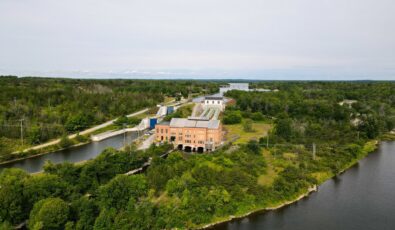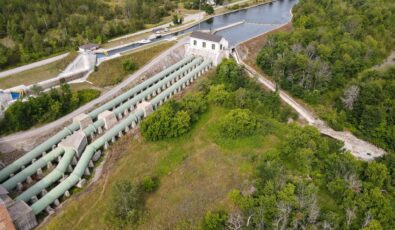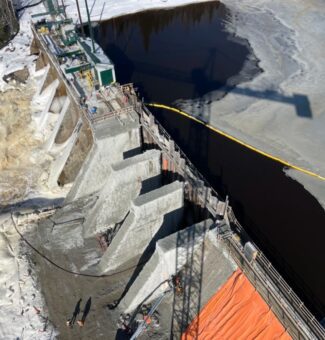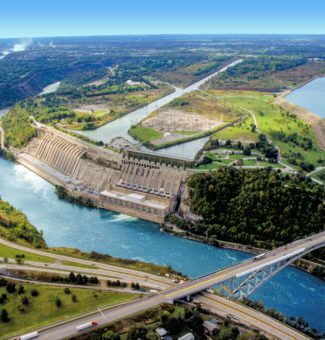OPG’s 109-year-old Healey Falls GS getting new lease on life with unit overhauls
On the Trent River near Campbellford, OPG’s long-serving Healey Falls Generating Station (GS) is in the midst of a 10-month-long overhaul on two of its generating units.

Work is now underway on the 109-year-old hydro station’s G2 and G3 units, which were last overhauled in 1990 and 1988. The overhauls are happening in parallel as the two units share a single penstock, the long tube that carries water to the powerhouse.
The station is situated about 500 metres southeast of the picturesque Healey Falls, which features a wide dam at the top of the falls followed by a series of rugged limestone steps.
Placed into service in 1913, Healey Falls GS originally had three units. In 2010, OPG completed a project to increase the plant’s capacity by adding a new 6.4-megawatt (MW) unit, bringing the station’s total combined capacity to 18 MW. The station has had a number of different spellings over the years – from Healy, Heeley, Heely, to the now-official Healey Falls.
“Our Healey Falls station has been contributing clean power for more than a century,” said Paul Seguin, Senior Vice President of Renewable Generation at OPG. “This project will ensure this station can continue to generate reliable and clean power for many more decades to come to help meet Ontario’s energy needs and achieve a net-zero carbon future.”

The four-unit, run-of-river station is just one of many hydro stations in OPG’s fleet currently undergoing similar refurbishments as part of the company’s expansive turbine/generator overhaul program.
The overhaul work at Healey Falls involves disassembling, inspecting, and restoring or replacing turbine components and associated butterfly valves. This work will help reduce erosion of the turbine, which can happen over time due to impacts from sediment in the water, while improving its service life and reliability, and reducing maintenance requirements for at least 25 years.
So far, the project team has made solid progress with the completion of G2’s disassembly in July and the start of G3’s disassembly. Various components from both units have been shipped to machine shops for refurbishing.
Subscribe and stay informed
Sign up to receive the latest news, project updates, and event information from OPG.


